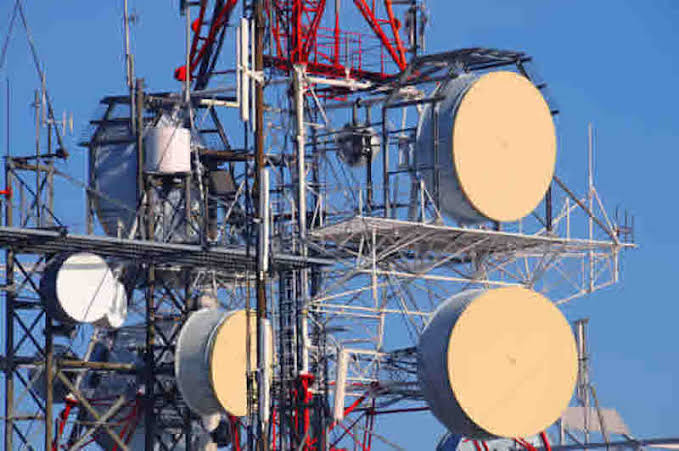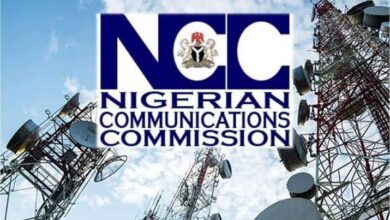
When it initiated National Broadband Plan (NBP) for 2020-2025,the Nigerian Communications Commission (NCC) had a modest projection of 70% penetration by the turn of 2025.
As at 2020,the penetration according to NCC stood at about 32% and by all calculations and computations,70% maybe attainable if all things were equal.
With 43% recorded as at April 2024,analysts think that 70% in 2025 maybe unrealistic.
Industry players’ fears stem from funding especially at a time when Foreign Direct Investments ( FDIs) are dwindling and with paucity of foreign exchange and the rising exchange rates,there are palpable fears that the growth envisioned may be far away.
But the government is optimistic about the realizations of the projected 70% by 2025 ,based on a number of factors chiefly on the advent satellite broadband technology which is seen to be disruptive and bound to make a difference.
The government also thinks that if the fibre optic ring being built comes on stream,it will propel the growth beyond the 70% projections by 2025.
The government seeks to address the country’s significant broadband penetration gap by implementing the National Broadband Plan (NBP 2020-2025).
The NBP 2020-2025 programme aims to achieve a broadband penetration target of 70% and population coverage of 90% by 2025.
To improve the nation’s low internet connectivity, the recently announced plans to expand the country’s existing infrastructure by an additional 90,000 kilometres (km) of fibre optic cables will be a boost to connectivity via broadband.
The project, when completed, is expected to increase the country’s fibre optic cable from its current level of about 35,000 km to around 125,000 km.
Furthermore, the significant expansion will place Nigeria as Africa’s third-largest terrestrial fibre optic backbone, behind South Africa and Egypt.
With a slight rise by 1.0% month on month and 2.5% year on year to 94.4m in April 2024, according to the data from the Nigerian Communications Commission (NCC),Broadband connections have maintained an upward increase since September 2023, except for a brief moderation in January 2024.
NCC says that mobile broadband accounts for a substantial portion (over 99%) of Nigeria’s broadband connections because of the convenience and relatively low cost of acquiring mobile lines. Consequently, the upward trend in broadband connections can be linked to the sustained growth in active mobile lines.
Due to the modest monthly rise in broadband connections, the nation’s broadband penetration rate increased slightly to 43.5% in March from 43.1% the previous month.
FDIs are on a steady decline and this affects growth in the sector and Association of Licenced Telecommunications Operators Of Nigeria (ALTON) is worried.
“As indicated by last year’s National Bureau of Statistics (NBS) report, which highlighted a decline in Foreign Direct Investment (FDI), we are apprehensive that this trend may persist. The dynamics of the exchange rate are influencing many aspects of the industry,” its Chairman Gbenga Adebayo is quoted as saying.
Adebayo explained that investment downturn,is a major nightmare.,
“The current investment figures are a clear indicator of the challenges facing the industry. This is adversely affecting the expansion of network infrastructure, and we fear that FDIs may continue to decline, further impacting the performance of operators.”
Nigeria was encouraged by a World Bank report which states that every 10% increase in broadband penetration can enhance a country’s Gross Domestic Product (GDP) by at least 4.6%.
Buoyed by this ,the government swiftly saw expanding broadband services in Nigeria, as an urgent matter which is aimed to tackle a variety of socio-economic challenges, such as economic growth, broadening the tax base, and enhancing digital literacy and educational standards.
This was the reason that led to the estab of a second National Broadband Plan (NBP 2020-2025) after successfully reaching about 25% penetration milestone with the first plan (NBP 2013-2018).
The NBP 2020-2025 among other ambitious objectives, include achieving internet speeds of 15Mbps in rural areas and 25Mbps in urban areas by 2025.
Additionally, it aims for the interconnection of 90% of all Local Government Areas by fiber and seeks to attain 70% population penetration. Another goal is ensuring that 100% of tertiary institutions are within 5km of a fiber Point of Access.
Moreover, the plan targets reducing the average cost of data to N390/Gb or less and establishing at least one local assembly or manufacturing plant for smart devices within Nigeria, further promoting the nation’s technological advancement and self-sufficiency.
As at March 2024,internet subscribers base stood at 164,368,292 .Of this figure,GSM accounts for 163,895,185.
ISPs accounted for 213,876 while Voice Over Internet Protocol (VoIP) accounted for 238,139 and fixed/ cable connections stood at 21,092.
By March 2024 too,the number of ISPs stood at 255 and these include the followings: Spectranet Ltd,Astramix Ltd,VDT Comms Ltd,Cobranet Ltd,Ngcom Ltd,MainOne, an Equinix Company,Hyperia Ltd,I-World Networks Ltd. There are Inq. Digital Nigeria Ltd (formerly Vodacom),Galaxy Backbone Limited, Dotmac Technologies Ltd,Radical Tech Network Ltd,Cyberspace Network Ltd,
Suburban Broadband Ltd ,IPNX,Tizeti Network Ltd among others.
The International Telecommunications Union(ITU) is of the view that Artificial Intelligence (AI) may be the elixir for massive penetration of broadband.
In its “The State of Broadband 2024: Leveraging AI for Universal Connectivity” which it released reveals that emerging technologies stand to revolutionize the way decisions are taken and services are provided.
The report highlights how AI is already reshaping the delivery of traditional services for human well-being in sectors such as government, education, healthcare and finance.
The analysis also identifies challenges associated with AI and other emerging technologies. These include energy consumption, misinformation, reinforcement of biases and gender discrimination. Commissioners focused on how to mitigate risks of emerging technologies while maximizing the benefits.
“The use of Artificial Intelligence is not new, but recent advancements in data, computing power, and algorithms are driving innovative services,” said Carlos Slim, Founder and President of Grupo Carso, Co-Chair of the Commission. “The rapid development of Generative AI highlights its potential for original content and new applications. We must redesign talent and retrain workers in digital skills to maximize these benefits.”
An estimated 2.6 billion people around the world remain offline, according to the International Telecommunication Union (ITU), the UN Agency for Digital Technologies.
While overall Internet use is increasing, the benefits of access are unevenly distributed, reinforcing persistent digital divides affecting women and people in countries with lower economic development. The elderly and people with disabilities are among other groups being left behind.
“Broadband is fundamental to ensure that everyone can benefit from digital technologies when so many people are still offline around the world,” said ITU Secretary-General Doreen Bogdan-Martin, Co-Vice Chair of the Commission. “AI and other emerging technologies can help efforts to achieve universal meaningful connectivity, and it’s our job to make sure this happens in a way that is responsible for people and the planet.”
ITU Broadband Commission reviewed progress on its 2025 Advocacy Targets, comprising seven objectives for action in broadband development and universal connectivity. One target for mobile broadband affordability is close to being achieved. A target for gender equality in access to broadband has been achieved for some countries, although not globally.
The Commission noted that AI and emerging technologies can drive progress on broadband and the SDGs. However, balancing the promotion of AI benefits while managing the challenges is a key task for policy-makers who are “racing to catch up” to the implications of the technologies.
“Having two thirds of the world’s population now online is a cause for celebration. But with only half as many connected in least-developed countries, and even less among women, the new report shows the urgent work still to be done,” said UNESCO Director General Audrey Azoulay, Co-Vice Chair of the Commission. “We must also address the risks faced by those online, through better governance of digital platforms, ethical use of AI and massive upscaling in digital skills, including media and information literacy.”
The report reviews how AI solutions can accelerate progress on broadband advocacy targets aimed at getting everyone online and achieving the UN Sustainable Development Goals (SDGs).
“Emerging technology trends such as artificial intelligence are anticipated to add trillions to the global digital economy,” said Rwanda’s Minister of Information Communication Technology and Innovation Paula Ingabire. “The ability to harness artificial intelligence to revolutionize access to broadband and other services as well as boost productivity for different sectors will require massive investments in the building blocks including power, connectivity and computing resources, particularly in emerging economies.”






